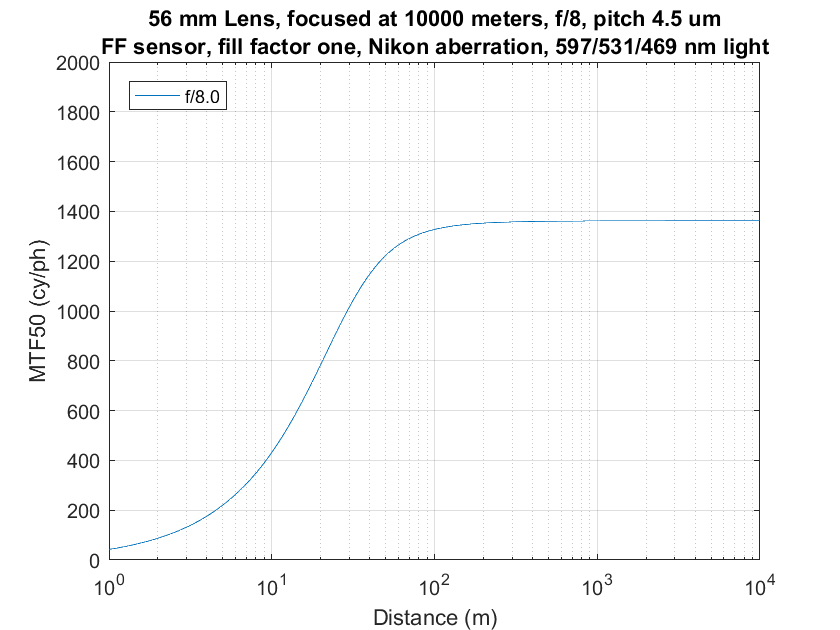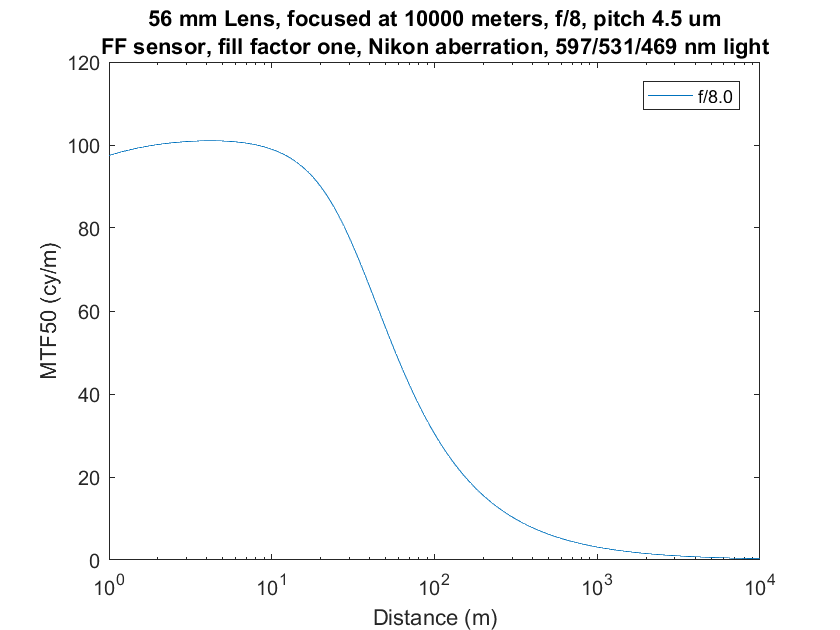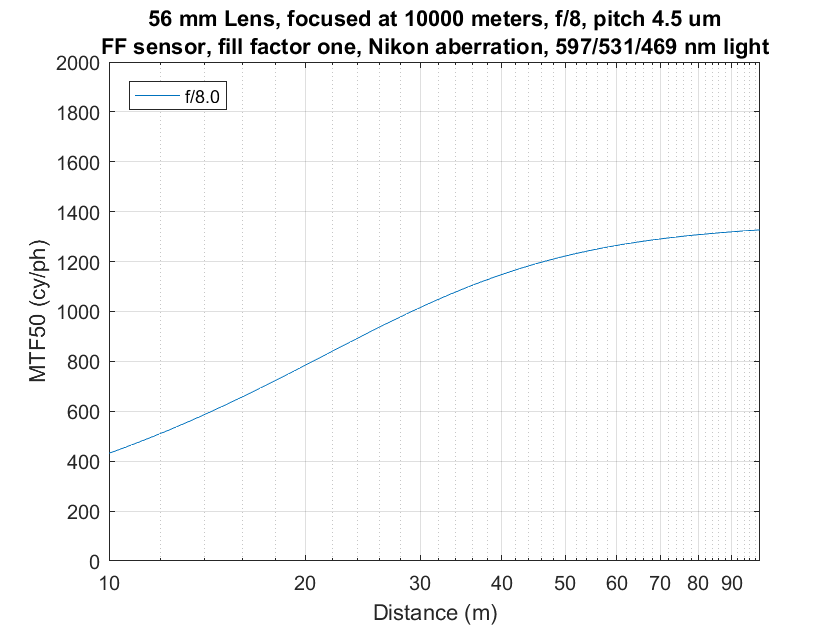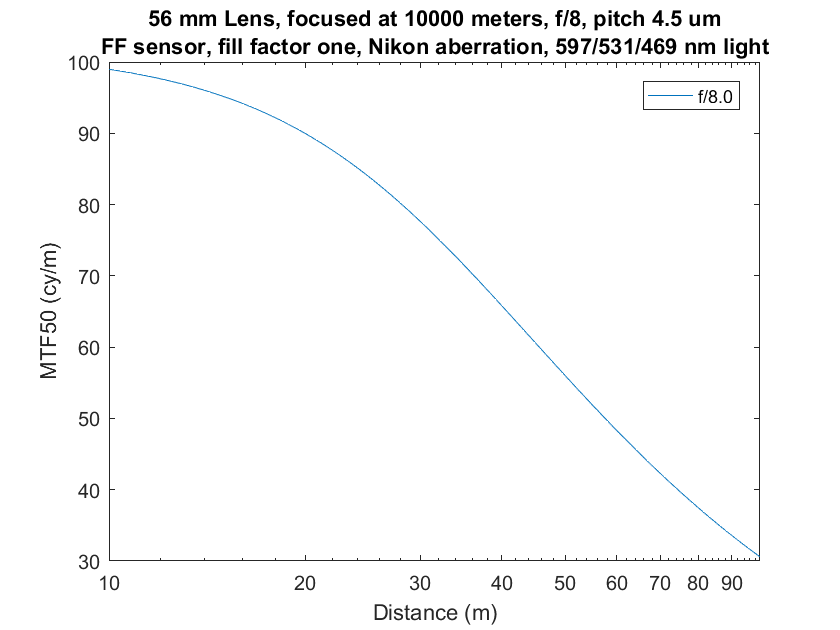This is a continuation of a report on new ways to look at depth of field. The series starts here:
I’m beginning to wind down this long, long look into the details of depth of field (DOF) management. Today I’ll devote the post to object-field (OF) techniques. I have talked about object field methods throughout this series, but if you need a refresher, have a look here.
The OF approach can be made as complicated as image plane management, but in one common situation it offers great simplicity. Say you’re making a landscape photograph, and there’s important subject matter at infinity and nearby. Where do you focus? This is a situation in which conventional DOF management methods would have you pick an aperture, a circle of confusion (CoC) and use the resulting hyperfocal distance.
The OF way is much simpler and requires no tables. Here’s the short version:
Set your aperture equal to the size of the the smallest near objects you’d like resolved. If you’re using a 56 mm lens (to make the arithmetic easy), and you want 7 mm objects resolved, set the lens to f/8. Then focus at infinity.
What’s wrong with that? Let’s try it with a simulated 56 mm lens and see what image and object field MTF50s result.


Resolving 7 mm objects fairly well would mean having an MTF50 of 0.5*(1000/7) cycles per meter, or a bit over 70 cy/m. And that’s pretty much what we see, between a and 10 meters. However, at those distances the image-plane MTF50 is quite low, reaching only about 400 cy/ph at best.
Let’s take a close look at the region between 10 and 100 meters:

You can see that the object field resolution falls off with increasing rapidity in this region, and the 7 mm objects are not at all well-resolved past about 30 meters, where the image-plane MTF50 is only about 1000 cy/ph.
There is nothing wrong with the theory of OF DOF management, as far as it goes; it just doesn’t take into account lens aberrations, diffraction, and capture blurring, and those things conspire to limit its applicability just when the sharpness gets interesting.
Although I see advantages in the object field approach in some circumstances, and I understand that it can offer a simple, tableless strategy — in itself worth a lot — I find object-field DOF management problematical in some areas.
It doesn’t take into account the fact that with vision, resolution in the object field varies with subject distance. Visual resolution is constant with the angle subtended by the critical subject features. After years of seeing the world through our own eyes, we are thoroughly conditioned to seeing object field resolution decrease with distance. This is less of a concern that would be the case if the object field lines above were straight and flat.
Sensor capture noise is constant in the image field, but not in the object field. To the extent that noise obscures details, OF methods will be optimistic in a manner that varies with distance. Since at capture, depth information is lost, there is no way to do sharpening in the object field. This is true for input sharpening, creative sharpening, and the printer-compensating sharpening that should occur as the last step before printing. All those will have effect on the object-field sharpness that varies with object distance.

I haven’t followed this long, techie series, but I still don’t see how it makes any sense to focus at infinity.
IIRC, that was the conclusion/summary of the long thread on DPR, and it didn’t make any sense to me then either.